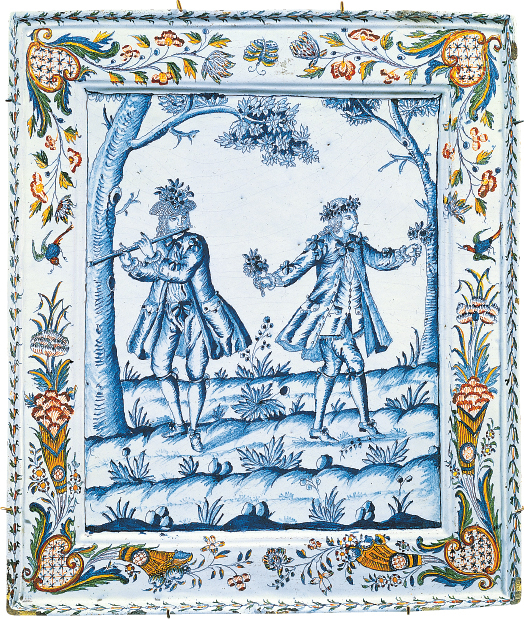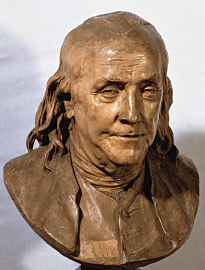Art and Entertainment

Entertainment, for most people, contributes to the good life — though certainly Thomas Jefferson was thinking of more than entertainment when he wrote of “the pursuit of happiness.” However, the pursuit of entertainment was not something that the eighteenth century looked down upon at all. Art was expected to please rather than to instruct, impress, or even express, as had been the case in the Baroque era. The result of this attitude is evident in the style of all the arts in the eighteenth century.
For a time at midcentury a light and often frothy style known as Rococo was fashionable in painting, decoration, furniture, and so on. Our illustration — a ceramic plaque — catches the spirit of this entertainment art with special charm. Wreathed in leaves that fit in with the border, two well-

Music of the mid-
The Viennese Classical music of Haydn and Mozart that we will study is far from this light style, yet these composers never put pen to paper without every expectation that their audiences were going to be “pleased.” Every historical era, of course, has had its entertainment music. But only in the Classical era was great music of the highest quality put forth quite frankly and plainly as entertainment.